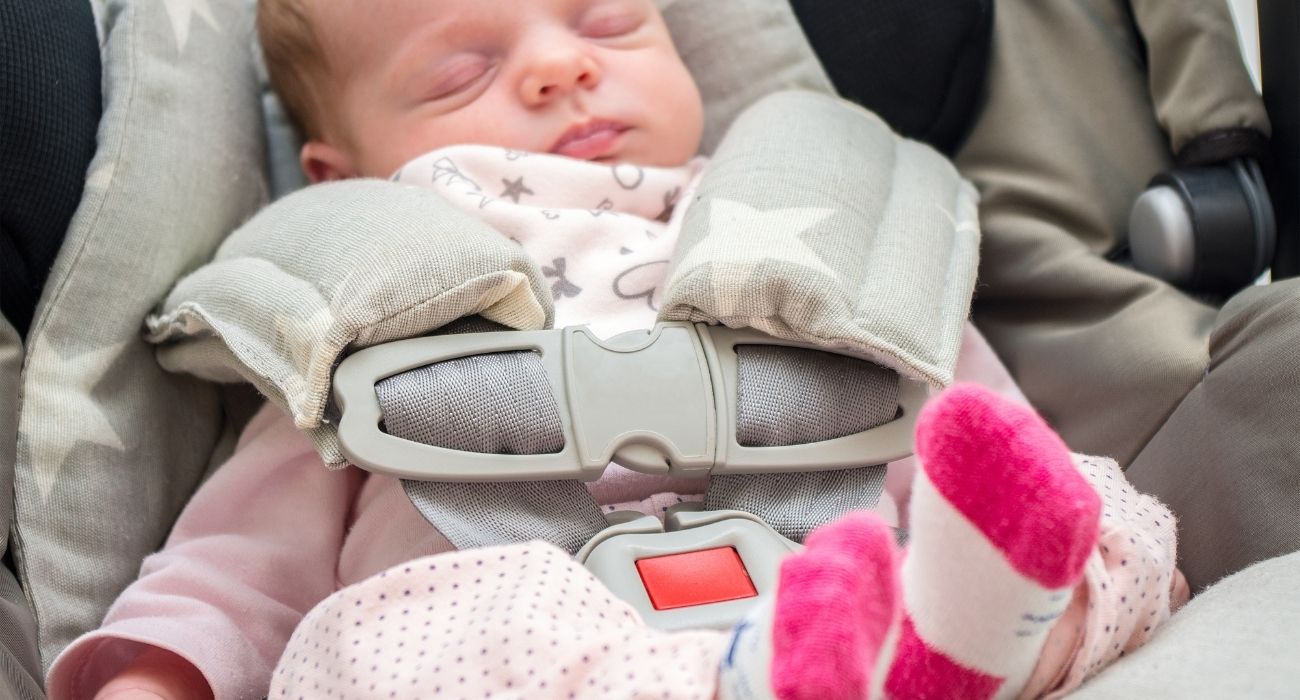Driving when pregnant
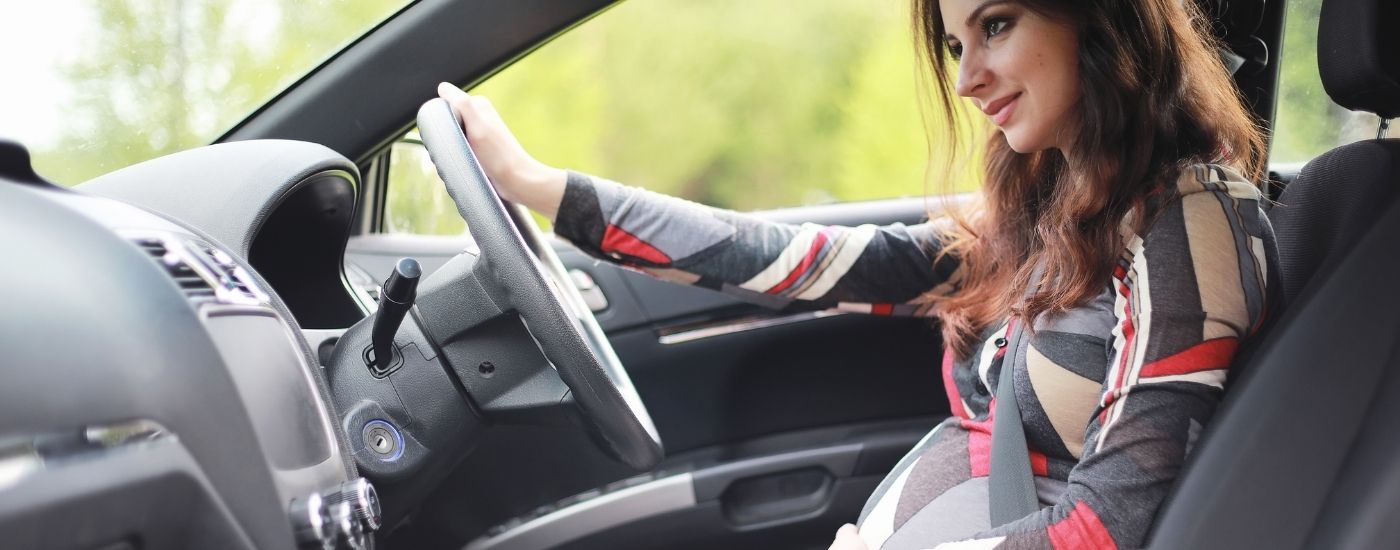
Driving when pregnant can sometimes be daunting for many mums, especially for those when it’s their first time. Naturally, there’s an extra level of worry when driving whilst pregnant, and some mums may even assume that getting behind the wheel while expecting isn’t safe.
However, don’t worry too much; providing all other aspects of your pregnancy is going okay, and you’re feeling fine and healthy, it’s no problem at all for expectant mums to drive as much as they need.
You might have to adjust your driving experience to accommodate your bump, and you might also want to take a few extra precautions to protect yourself and your little one.
We have put together this guide for any mums-to-be, proud partners or supportive friends and family who are worried about any part of driving when pregnant. We have provided some helpful advice and tips to help you have a safer, legal, and comfortable journey.
What are the UK laws surrounding driving when pregnant?
As of 2021, there are currently no motoring laws that stop pregnant women from driving at any point during their pregnancy. It goes without saying that all existing driving laws still apply to pregnant drivers, so you must ensure you're in a fit and proper condition to drive.
Is it safe to drive when pregnant?
Most of the time, driving during pregnancy is absolutely fine. However, we want to inform you that there is a bizarrely higher risk associated with driving when pregnant than when not pregnant.
Research in 2014 indicated that women were 42% more likely to become involved in serious car accidents during their second trimester than those who weren’t pregnant. In the first and third trimesters, the risks tend to be the same as that outside of pregnancy.
During the second trimester, it’s common to be beset with a whole bunch of distracting ailments such as fatigue and sleep deprivation that can contribute to being less alert when driving.
Nausea and tiredness are a couple of symptoms that can occur during the first twelve weeks of your pregnancy, both of which can affect your concentration, so don’t drive unless you feel safe to do so.

In the last few weeks of pregnancy, expectant mothers might find it difficult to move and look around in a car, and not being able to see around you for checking blind spots can be dangerous. So if it gets to this point, you may want to hand over driving responsibilities to someone else.
Do I have to wear a seatbelt if I'm pregnant?
It’s still critical to wear your seat belt during your pregnancy. If you wear your seat belt correctly, there’s little chance of injury to your baby during everyday driving and if you’re involved in a road accident.
Even the slight chance of your baby or yourself getting injured when wearing a seatbelt doesn’t even begin to compare to the risks of not wearing one at all.
With regards to getting comfortable using a typical three-point seat belt during your pregnancy (and being safe in the process), here are some tips:
- Keep the driver’s seat as far back from the steering wheel as you can while still maintaining easy access to key components like the clutch, brakes, accelerator, gear stick, and headlight
- Perhaps adjust the angle of the steering wheel upward, so the bottom edge of the wheel isn’t directly parallel with your stomach
- The NCT (National Childbirth Trust) recommend that the shoulder belt goes over the shoulder, collarbone and down across the chest, between the breasts and that you should ensure the lap belt is worn as low as possible under the abdomen and the baby
- The NCT also recommends that you should avoid ‘lap-only’ belts as they have a history of causing severe injuries to unborn children if a vehicle suddenly brakes
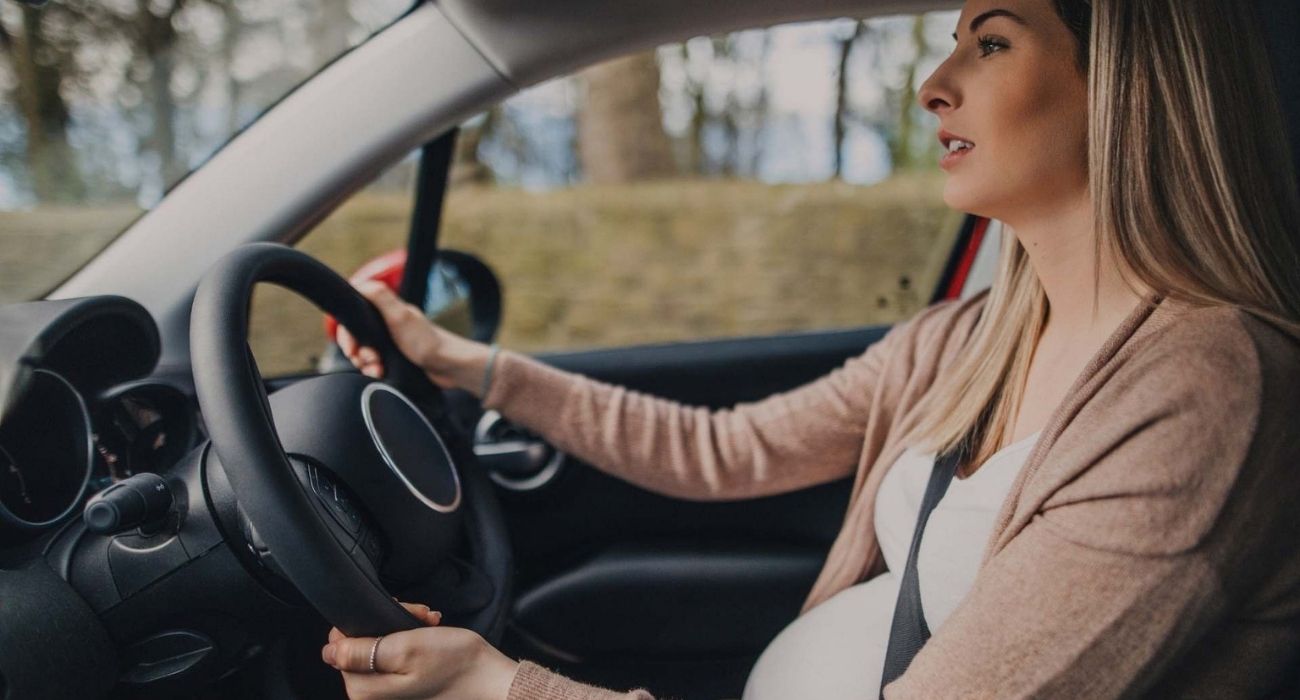
Wearing a seat belt while pregnant is still a legal and compulsory requirement unless your doctor confirms you don’t have to for medical reasons. If this is the case, your doctor should issue you with a Certificate of Exemption from Compulsory Seat Belt Wearing that you will need to keep in your vehicle.
Are airbags safe when travelling in a car when pregnant?
.jpg)
It’s safe to be in a vehicle fitted with them during your pregnancy, and they will help protect you and your baby in certain types of road accidents. If your car has the option to turn the airbag on or off, make sure it's always switched on, whether you're driving or are a passenger.
Airbags are designed to work with seat belts, and you should be safe as long as you're wearing your seat belt properly.
I have to drive for work - what are my rights?
Your employer is legally obliged to conduct risk assessments of your working conditions during your pregnancy. You can ask your employer to give you extra training or advice about driving safely once your bump gets big. If you’re struggling with your commitments between risk assessments, ask your employer to review.
Are long car trips safe during pregnancy?
Ideally, it would be best if you avoided long car journeys while you’re pregnant. When you’re pregnant, if you’re travelling as a driver or passenger for more than four hours, you have an increased risk of developing Deep Vein Thrombosis (DVT). DVT is a blood clot that often starts in the leg and can move up to your lungs, causing severe and possibly fatal consequences.
However, providing you can schedule some breaks along the way to your destination, it should be ok. To avoid a serious blood clot whilst driving, keep the blood flowing by taking several stretch breaks and perhaps also wear compression stockings – as they help increase the blood flow in your legs and help prevent blood clots.
It’s important to eat natural energy foods such as nuts and fruit and drink regularly during long car journeys as fatigue and dizziness are common symptoms during pregnancy.
.jpg)
If possible, try not to do long car journeys by yourself and share the driving with someone. While on a long car journey, it’s good to keep the air circulating in the vehicle and wear your seatbelt with the cross strap between your chest and the lap strap across your pelvis under your bump, not across your bump.
If you’re not a driver during a long car journey, you can also take the opportunity to do a few leg exercises, such as flexing your ankles.
What should I do if I'm involved in an accident whilst pregnant?
No matter how minor an accident might have been or if you feel fine afterwards, it’s best to call your doctor and ask to be examined, just to be on the safe side. This is because a strong jolt may cause pregnancy complications. If you have any pain, bleeding or contractions after the accident, you should see a doctor as soon as possible.
What's the best way to make yourself comfortable when travelling during pregnancy?

Doing simple stretches, both in and out of the car, will help keep your blood circulating.
Sitting for long periods can be difficult when you're pregnant, as it can contribute towards your feet and ankles swelling, or your legs might cramp up as well.
You might be able to reduce aches and swelling with only a little movement. If you're sitting in your vehicle or standing at the motorway services, extend your leg heel first and gently flex your foot to stretch your calf muscles. When you're sitting, rotate your ankles and wiggle your toes – providing you’re not driving, of course!
For longer car journeys, regardless of whether you’re a driver or passenger, you should take regular breaks, preferably every 90 minutes, as this will help your blood flow and avoid any dangers with Deep Vein Thrombosis.
Taking such regular breaks will also help you stay focused on your driving.
If you’re suffering from any back pain, it is recommended that you put a cushion or rolled-up towel in the small of your back.
Try to keep some healthy snacks on hand and keep yourself well hydrated by drinking plenty of water – as both will help you maintain your energy levels.
What should I do if my car breaks down when I'm pregnant?
If you haven’t got any breakdown cover, try to get it arranged before you travel. There are different levels of cover, so choose whichever one suits your requirements best – you can sometimes bolt it on as part of your insurance cover.
Try to make sure your vehicle is maintained and serviced throughout your pregnancy to try and avoid any unwanted breakdowns.
Just in case you breakdown in a rural or remote area while on a long journey, store some warm clothes, a torch, snacks, drinks, blankets and cash in the boot beforehand. Ensure your mobile phone is charged up and have a travel powerbank to charge the phone while on the move.
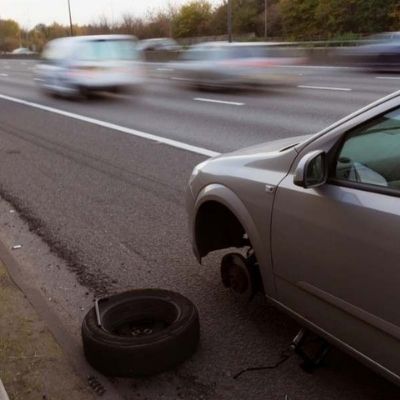
If you breakdown on the motorway, it’s vital to move away from fast-moving traffic.
Follow these steps:
- Try to get off the motorway and as far across to the left of the hard shoulder as you can. If there’s no hard shoulder, pull onto the verge on your left-hand side. Put your hazard lights on so that motorists know you have broken down and also switch on your headlights.
- Where possible, get out of the left-hand side of your vehicle (easier said than done in the latter stages of pregnancy!). Step behind a barrier if possible.
- If you can, try to use the emergency phones instead of your mobile to call for help, as your location can be pinpointed. There should be posts along the back of the hard shoulder with arrows pointing in the direction of the nearest emergency phone along. There should be an emergency phone every mile or so, and each one has its own reference number, which you should quote to the operator who answers the call. It’s also good to inform the operator that you’re a vulnerable driver because of your pregnancy.
- Return to your vehicle and wait for help – but don’t get back into the vehicle, wait on the raised area situated behind a barrier so that you’re as far away from traffic.
- If you can’t get to one of the emergency phones, call your breakdown provider, or Highways England on 0300 123 5000.
- If you breakdown in moving traffic and can’t leave your vehicle, switch on your hazard lights straight away, keep your seat belt on and call 999 immediately.
When is the best time to stop driving during pregnancy?
There is no definitive answer for this – it depends. Some expectant mums-to-be continue to drive right up to the birth date. In contrast, others find that, once they reach a particular stage of their pregnancy, driving becomes impractical, uncomfortable or unsafe.
There’s no specific point during a pregnancy when you should stop driving. It’s entirely up to you and how capable, comfortable and safe you feel. Just watch out for common pregnancy symptoms such as tiredness or dizziness affecting your focus when driving.
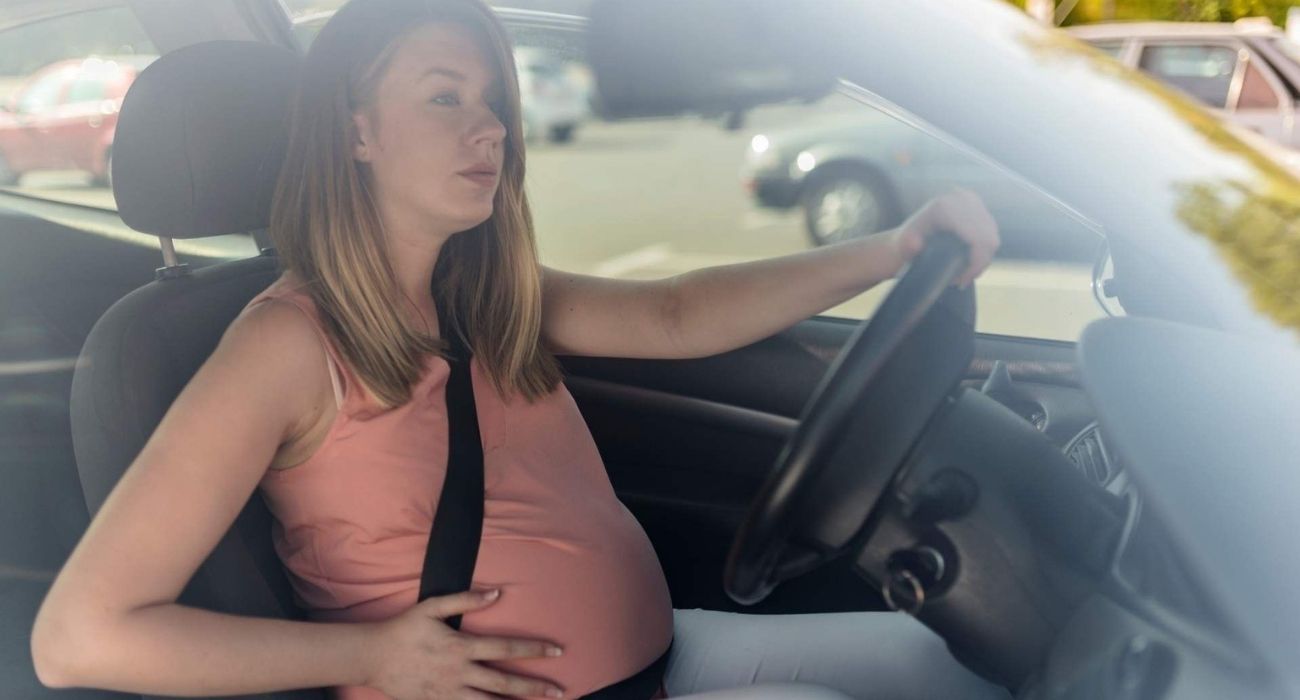
When should I not drive when pregnant?
You should avoid driving where possible when:
You can't get into a safe driving position
For example, if you have to push your seat back from the steering wheel so much, you struggle to reach the pedals. Or, you have to turn your body a little sideways to take pressure off your aching hip.
No matter what the issue is, if it’s causing you to drive in a dangerous position, you need to stop driving until you’re able to get back to sitting in the position you’re supposed to. Otherwise, anything else increases your chances of having a traffic accident.
You’re suffering from nausea or dizziness
If your nausea is so bad that you cannot get off the sofa, you shouldn’t be getting behind the wheel. Nausea is often accompanied by dizziness and light-headedness, and you definitely shouldn’t drive with those symptoms.
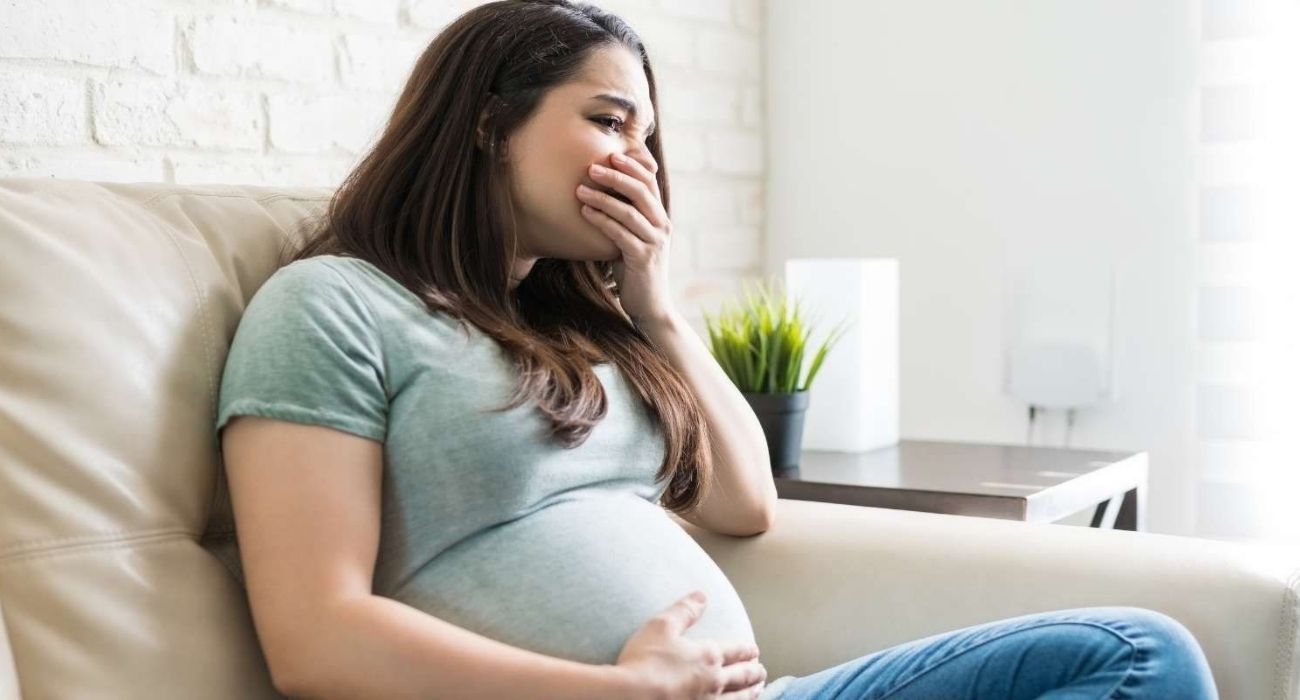
You’re unable to take regular breaks
If you’re on a long journey, it is vital to take regular breaks, preferably every 90 minutes, so that you can get out of the car and stretch your legs, as this will increase your blood flow and avoid the risk of deep vein thrombosis, which you’re at higher risk of when you’re pregnant.
You’re unable to move appropriately to check blind spots
If you’re at a stage of pregnancy where your movement is restricted and you’re struggling to check your blind spots, you’re putting yourself in danger, and it’s best to avoid driving.
When is the best time to start driving again after giving birth?
As long as your GP has given you the all-clear and you feel OK to drive, then it should be fine.
After a natural birth, it’s generally recommended that new mothers rest for several days before carrying out any usual daily activities. You could start with short journeys when you’re ready to do so, but you should ideally wait a few weeks before tackling any long trips.
After a caesarean section, it will probably take a few weeks until you’re well enough to be able to do activities such as driving.
If you have any doubts about starting driving after giving birth, follow up with your midwife or GP.
